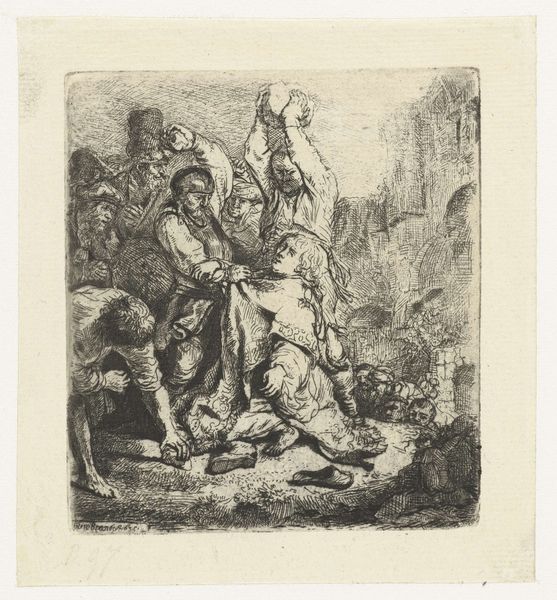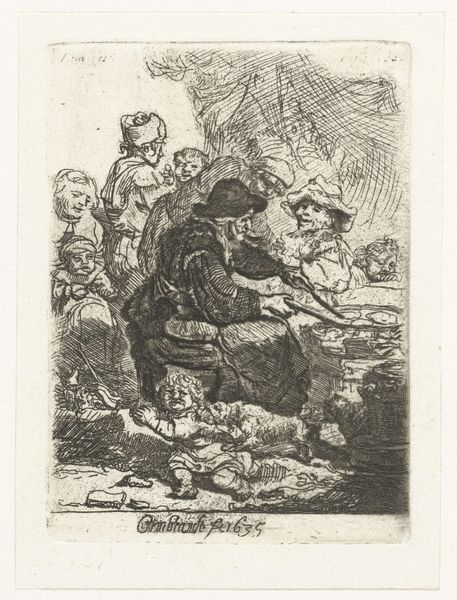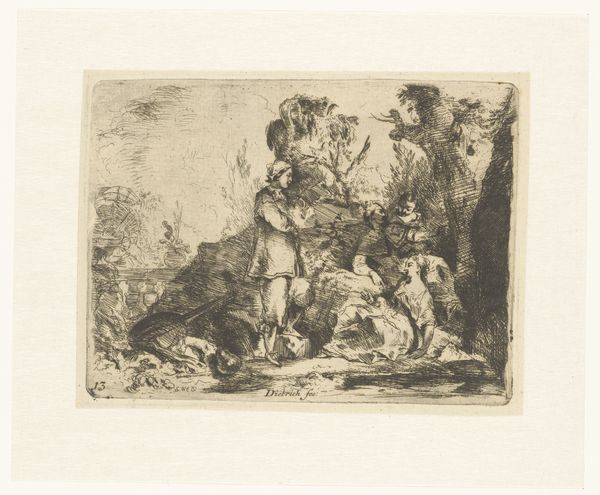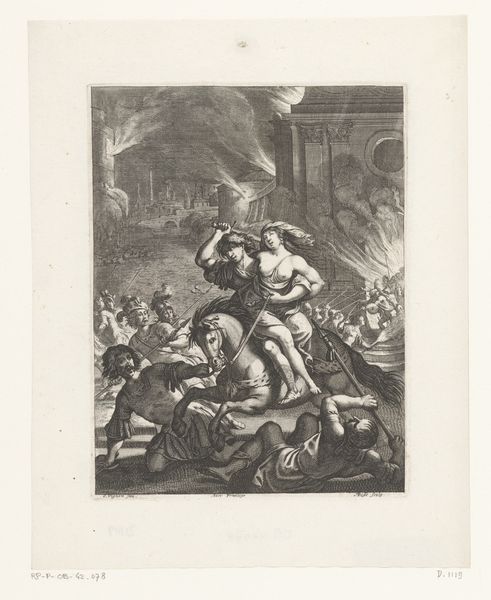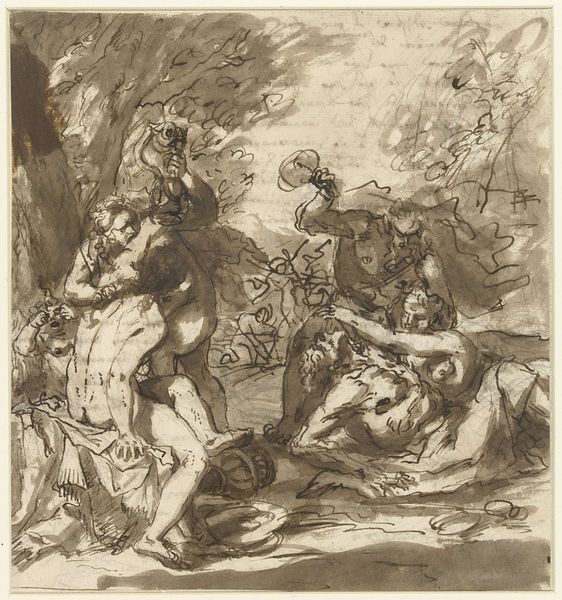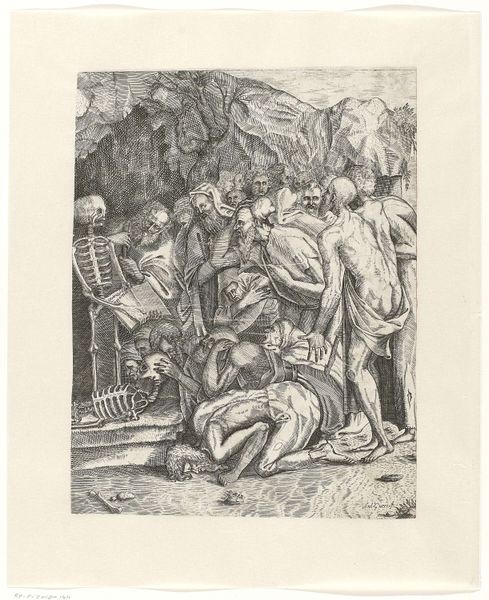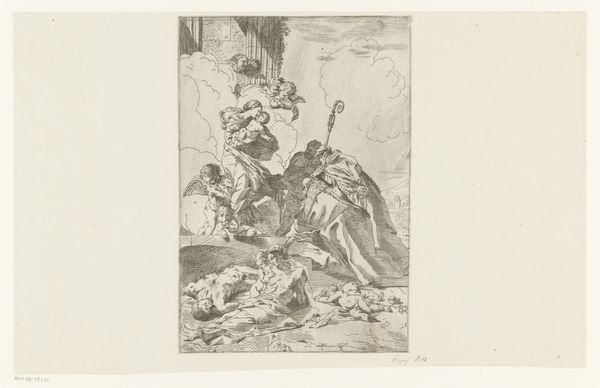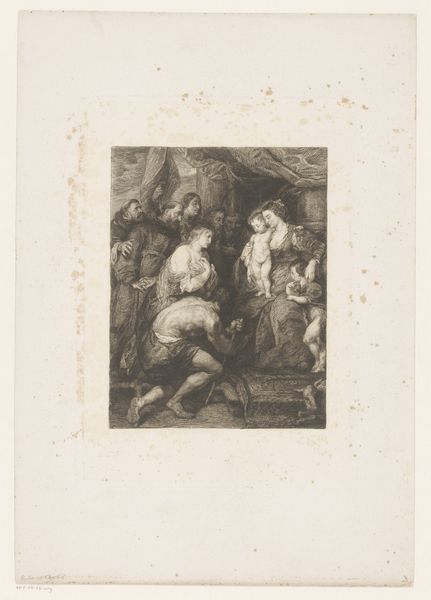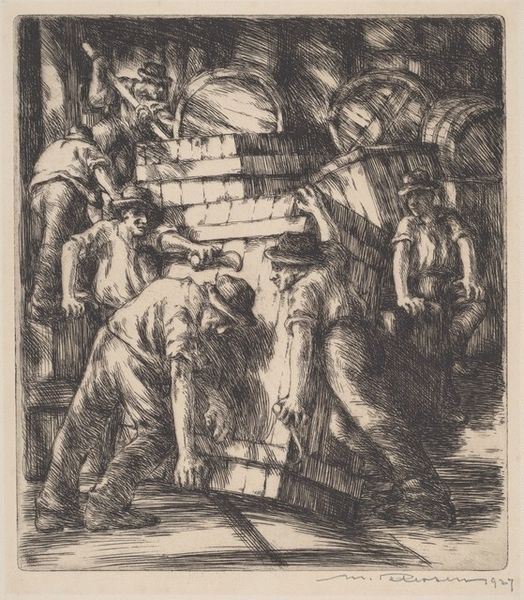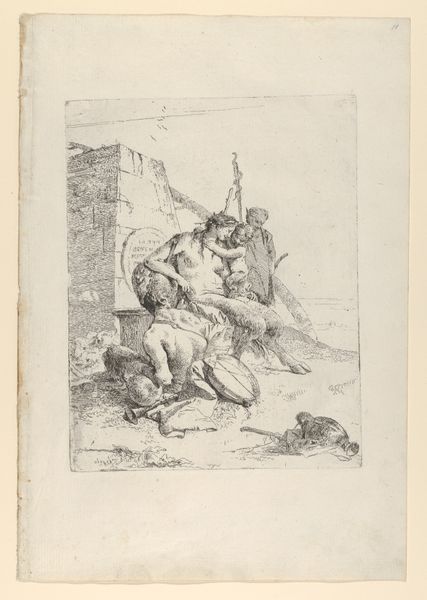
print, etching
#
narrative-art
#
baroque
# print
#
etching
#
figuration
#
history-painting
Dimensions: height 95 mm, width 85 mm
Copyright: Rijks Museum: Open Domain
Editor: So, this is Rembrandt van Rijn’s “The Stoning of St. Stephen,” created in 1635. It’s an etching, a pretty small print. It feels… intensely chaotic. All those figures crammed together, the violence about to happen. What jumps out at you? Curator: The light, naturally. Rembrandt orchestrates shadow and illumination not just to depict the event, but to amplify its psychological weight. See how Stephen is bathed in light, a visual signal of grace even as darkness closes in. And what do you make of those observing figures in the shadows? Editor: They seem… almost detached? Like spectators at a gruesome game, or they represent moral apathy. Are you saying they symbolize something deeper about societal complicity? Curator: Precisely! Rembrandt frequently employed historical or biblical narratives to reflect on contemporary issues. Consider the composition itself. The compressed space, the swirling lines... it generates a sense of claustrophobia. What does this tight grouping signify for you in the narrative? Editor: It emphasizes the mob mentality. The individual faces are lost in the mass, driven by collective violence. It's almost primal. You know, the scene almost reads like a stage with dramatic spotlights and shadowed corners, everything is there to deliver a clear message, right? Curator: It's not just a message but an invitation for introspection. Why do we participate or stay silent in the face of injustice? The symbolic resonance persists. Editor: It’s amazing how much meaning is packed into such a small image! I didn’t think about the observers representing societal silence; it adds a completely new layer. Curator: Indeed, Rembrandt's prints invite such continuous unveiling, layered meanings through visual language.
Comments
rijksmuseum about 2 years ago
⋮
Stephen was appointed a deacon (spiritual servant) by the apostles. He preached and worked miracles, and is considered the first Christian martyr. He was stoned to death for accusing the high priests of murdering the Messiah. Despite the print’s small format, Rembrandt succeeds in suggesting the sheer brutality of the drama. Besieged by various people throwing stones, Stephen has almost succumbed to the violence.
Join the conversation
Join millions of artists and users on Artera today and experience the ultimate creative platform.
